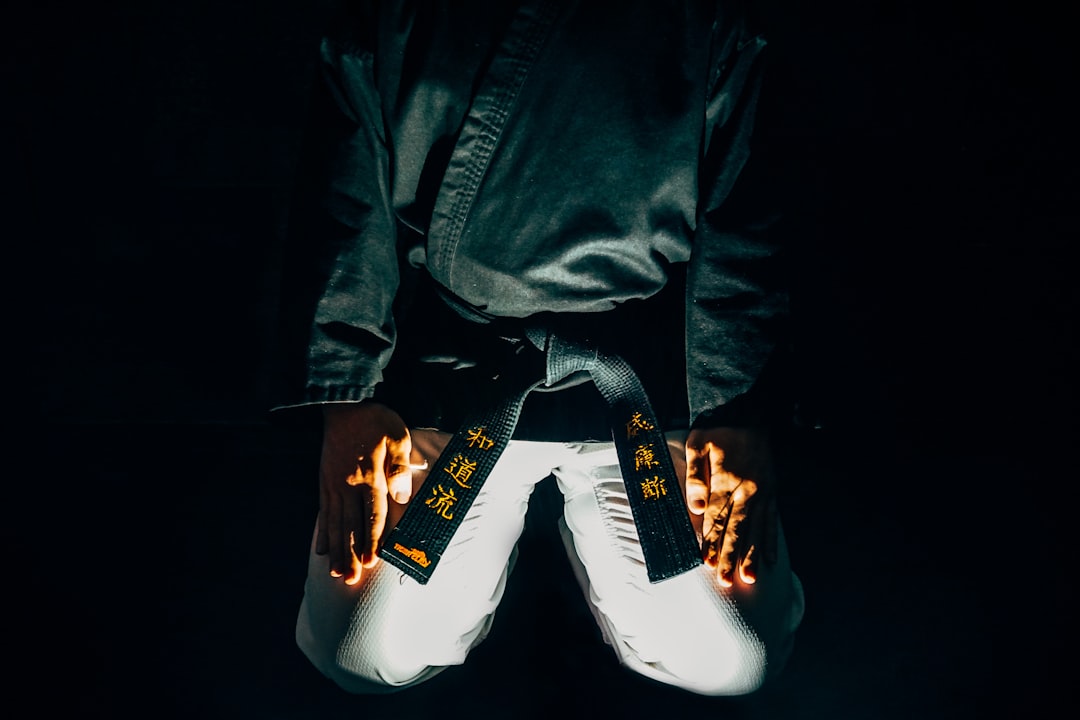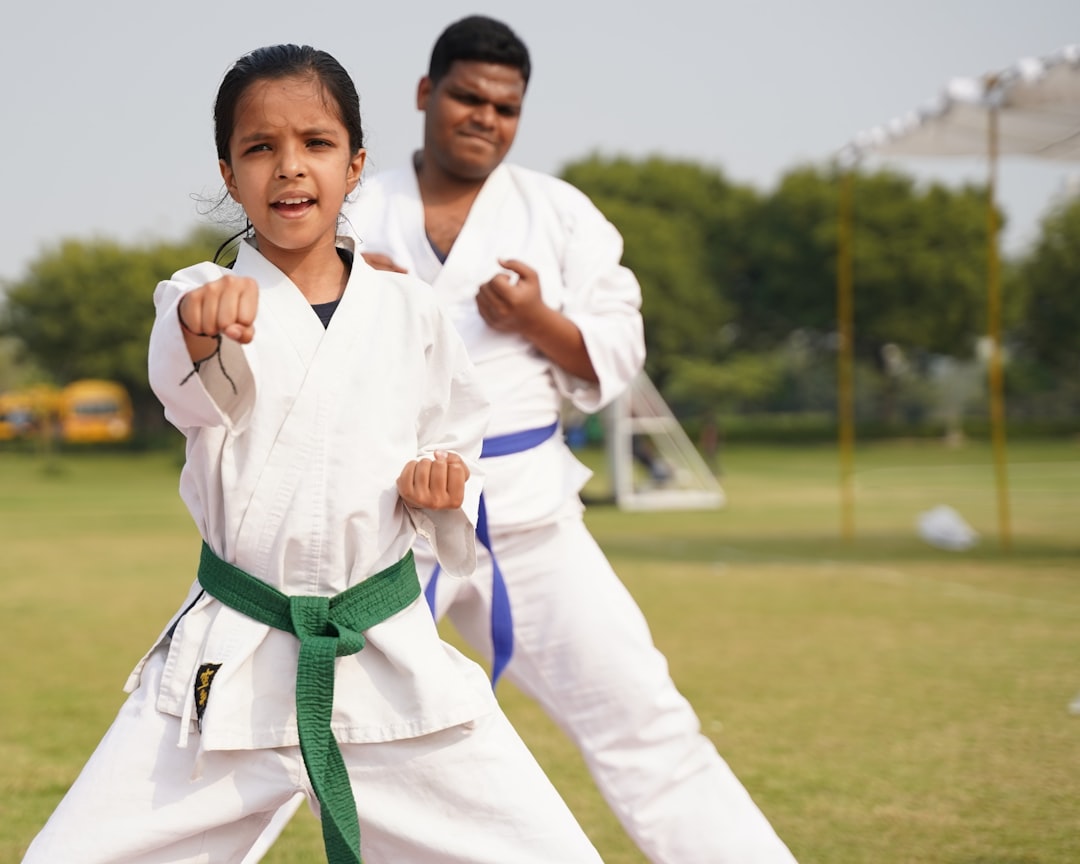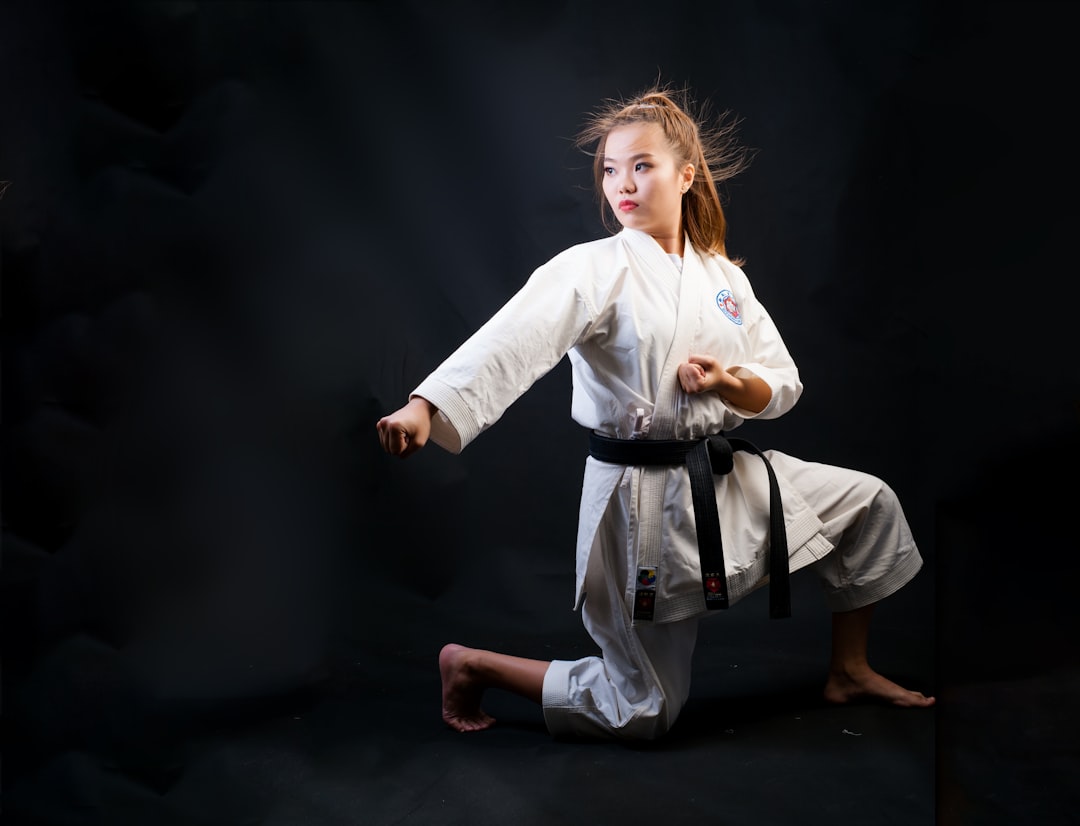To successfully train karate at home, you'll need a safe and clear training area, along with essential equipment like a sturdy karate mat to minimize injuries from falls or high-impact movements, and a heavy bag for honing your striking techniques. Protective gear such as hand, foot, and body padding is crucial for practicing blocks, punches, and kicks without risking injury. Supplement these with instructional materials like guides and online tutorials to master the correct techniques, and consider keeping a training journal to track progress and set goals. For those with limited space, multifunctional equipment like a combination wall bag and pull-up bar can be beneficial. Remember to use a Gi for authenticity and form assessment, and don't forget protective hand pads, shin guards, and a mouthguard for safety during practice. Including focus mitts in your setup will help refine precision and power. With the right equipment, training karate at home can provide a comprehensive experience comparable to a traditional dojo, allowing you to progress towards each belt rank with dedication and discipline. Train karate home setups are designed to be practical and respectful of the martial art's traditions while offering a safe and effective way to maintain your skills and fitness levels from anywhere.
Karate enthusiasts seeking to refine their skills from the comfort of their own homes can attest to the significance of appropriate equipment in enhancing their practice. This article serves as a guide for those looking to set up a dedicated space for training karate at home, detailing the essential gear needed to optimize your martial arts journey. We’ll explore the foundational elements of Karate practice, including the importance of a traditional Gi, the roles of various belts, and the necessity of protective wear for safe sparring. Additionally, we’ll delve into the benefits of incorporating target bags, punching bags, and mitts to perfect your strikes and kicks. Furthermore, creating an ideal training environment is crucial for consistent progress; we’ll discuss how to select the right space, the advantages of mirrors for form improvement, and the integration of technology such as videos and tracking apps to complement your training regimen. Whether you’re a beginner or an advanced practitioner, this article will provide valuable insights on equipping your home for effective karate training.
- Essential Karate Equipment for Home Training: A Comprehensive Guide
- – Overview of Karate Practice Needs
- – Fundamental Martial Arts Gear: Gi, Belts, and Protective Wear
Essential Karate Equipment for Home Training: A Comprehensive Guide

1. To effectively train karate at home, one must equip their space with specific items that facilitate proper technique practice and safety. What are the essential pieces of equipment needed for home karate training? A balance of training aids, protective gear, and instructional resources will ensure a well-rounded training experience. For starters, a sturdy karate mat is crucial to provide shock absorption during exercises, preventing injuries from falls or high-impact movements. Do you want to practice your kicks and strikes with confidence and without concern for damaging your flooring? A high-quality karate mat addresses this need, offering both protection and a designated training area. Additionally, a heavy bag is an excellent investment for honing striking techniques, allowing practitioners to focus on delivering precise and powerful blows. Are you considering how to safely execute blocks, punches, and kicks against a resistant surface? Padding for the hands, feet, and body is essential to practice these defensive and offensive maneuvers without risking injury.
2. Beyond physical equipment, instructional materials such as detailed guides or online tutorials can be invaluable for home karate training. How can one ensure they are learning the correct techniques? Instructional videos or books written by experienced martial artists provide a framework for understanding proper form and execution. Are you seeking to track your progress and set goals for your practice? A journal or logbook is a simple yet effective tool to document training sessions, reflect on areas of improvement, and celebrate achievements. Furthermore, training with a partner, if possible, can offer mutual support and feedback, enhancing the learning process. Do you have a partner to train with at home? If so, communication and trust are key to effectively practicing techniques such as throws or grappling. For those training alone, mirrors can serve as a helpful aid to self-correct posture and form during exercises. Is space a limitation for your home training setup? Optimizing the available area with versatile equipment like a combined wall bag and pull-up bar can maximize both functionality and efficiency.

Interested in training karate from the comfort of your own home? While traditional karate practice often takes place in a dojo under the guidance of a sensei, modern advancements have made it possible to effectively train karate at home. To begin with, a dedicated training space free of hazards is crucial. Ensure you have ample room to practice kicks, blocks, and strikes without risking damage to your person or belongings. A soft tatami mat or a similar padded flooring can absorb the impact of your moves, providing both comfort and safety. A wall mirror is also beneficial, as it allows you to monitor your stances and form to ensure they are correct and improve over time.
In addition to the physical space, the right equipment is essential for an effective karate training regimen at home. A quality heavy bag and a set of focus pads will give you the opportunity to practice your strikes with force. Adjustable kick shields can simulate defensive maneuvers against an opponent. Hand targets and kicking dummies are additional tools that can enhance your technique by providing specific areas to aim for. Lastly, don’t forget to include a pair of karate gloves and shin guards to protect your hands and legs during intense training sessions. With the right equipment and a committed practice schedule, training karate at home can be as effective as practicing in a traditional dojo setting.
– Overview of Karate Practice Needs

When training karate at home, having the right equipment is crucial to ensure a comprehensive workout that replicates the experience of a dojo. A key piece of equipment for anyone looking to train karate from home is a spacious training area free of potential hazards, as safety should always be a priority during practice. This space can be demarcated with mats specifically designed for martial arts, which provide cushioning against falls and impact, helping to prevent injuries. Are you seeking a surface that offers both shock absorption and durability? Consider investing in high-quality karate mats for your home training. These mats are not only essential for safety but also for the longevity of your training regimen, as they protect both you and the floor from damage over time. Additionally, a sturdy punching bag or kick shield can be beneficial for honing your striking techniques, allowing you to practice punches, kicks, and blocks with resistance. Do you want to enhance your precision and power? Incorporate a focus mitt set into your training routine, as these will enable a partner to assist you in refining your speed and accuracy. With the right equipment, training karate at home becomes a feasible and effective way to improve your skills and maintain fitness levels.
– Fundamental Martial Arts Gear: Gi, Belts, and Protective Wear

When training karate at home, having the right fundamental equipment is crucial to ensure proper technique and safety. A high-quality Gi is essential for practicing; it’s the traditional uniform of karate practitioners, signifying respect for the martial art and its origins. Do you need a Gi for home karate training? Absolutely, as it helps instructors assess your form and provides a consistent surface for executing moves. Additionally, protective wear such as hand pads, shin guards, and a mouthguard are vital to safeguard against injuries during practice. Are these necessary for solo training sessions at home? While sparring might not be part of every home training routine, protective gear is still beneficial, especially for practicing strikes and kicks with force on target pads or in the event you have a partner to train with. Belts, representing rank and progress within karate, are another essential component, signifying your level of skill and dedication. How do belts factor into home training? They serve as a visual indicator of your proficiency level, guiding your learning journey and motivating you to advance to the next belt upon mastering the current one. Remember, whether you’re practicing kata or kumite, the right equipment will enhance your karate training experience at home.
In conclusion, for those looking to train karate at home, having the right equipment is key to a safe and effective practice. The essentials—a quality Gi, appropriate belts, and protective gear—are foundational elements that support proper form and technique. With this guide, you’re now equipped (pun intended) to establish a dedicated training space and ensure you have all the necessary items to progress in your karate journey from the comfort of your own home. Whether you’re a beginner or an advanced practitioner, investing in the right gear will enhance your experience and help you achieve your martial arts goals. Remember, consistency and dedication, combined with the proper equipment, are your pathways to mastering the art of karate.
